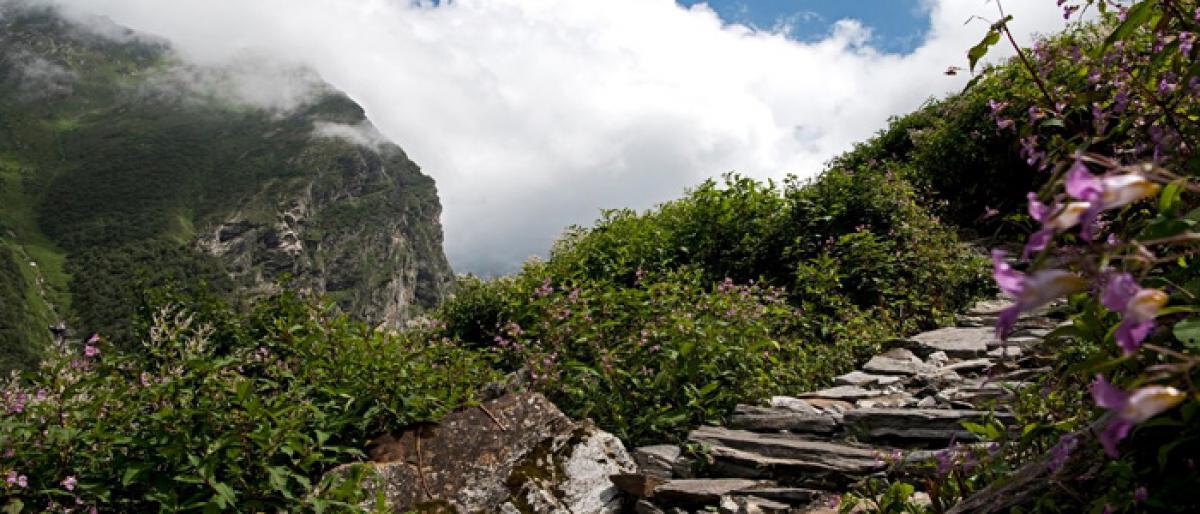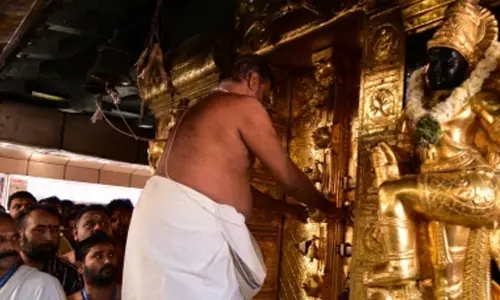A walk to remember

I waited nervously in the Haridwar railway station, fidgeting with my brand new trekking bag. I was to be off on my first full-fledged five-day trek in the Himalayas. Having only done short half day treks previously, I had no clue as to what to expect. All I knew was I wanted to see the flowers that would have, by now, carpeted the high altitude alpine meadow wedged somewhere beyond the mighty Nan
I waited nervously in the Haridwar railway station, fidgeting with my brand new trekking bag. I was to be off on my first full-fledged five-day trek in the Himalayas. Having only done short half day treks previously, I had no clue as to what to expect. All I knew was I wanted to see the flowers that would have, by now, carpeted the high altitude alpine meadow wedged somewhere beyond the mighty Nanda Devi Peak, for monsoon was here.
A UNESCO World Heritage Site, the Valley of Flowers is a breathtakingly beautiful high altitude meadow of alpine flowers in the Himalayas. Located in a transition zone that lies between the Zanskar Region of the Himalayas to the north and the Greater Himalayas to the south, this stunning biodiversity hotspot is accessible only through a trek route through the mountains.
While the actual trek begins at Pulna, reaching Pulna is in itself quite an adventure. Driving along the sinuous Himalayan roads you trace back the river Ganga from Haridwar, back to its birthplace crossing the ‘PanchPrayag’ along the way.
The PanchPrayag or five Prayags refer to the five holy confluence of rivers, which eventually become the Ganga downstream. Once you cross Rishikesh and go farther up the Garhwal mountains it is Dev Prayag that greets you first, where the Bhagirathi and Alaknanda rivers meet just before India’s most important river, the Ganga.
Beyond Dev Prayag are Rudra Prayag, Karna Prayag, Nanda Prayag and Vishnu Prayag in that order. But Vishnu Prayag is for later, as Joshimath is the first stop on this journey. For the drive here from Haridwar itself takes a day and gives one ample time to rest and prepare to begin the trek early next morning from Pulna.
A short drive of less than an hour brings one to Govindghat. This is when you cross the last or rather the first of the PanchPrayag, Vishnu Prayag. At Govindghat all the trekkers to the Valley of Flowers and pilgrims to Hemkund are issued identification cards by the Uttarakhand Government, for the trek route to the Valley of Flowers goes through the same base camp, Ghangaria, as the one to Hemkund Sahib, the world’s highest Gurudwara and an important pilgrimage centre for the Sikh.
From here on, taxis take you on the newly constructed road to drop off you at Pulna, shortening the trek route by a good four kilometres. As the trek is also a popular pilgrimage route, it is logistically one of the best equipped, from helicopters that fly into the base camp every 20 minutes to mules and porters that one can hire even further along the route. So there are enough arrangements to ease your trek if needed which makes the Valley of Flowers Trek a good option for novice trekkers just beginning to explore the Himalayas.
From Pulna it is a 12 kilometres trek along stone paved pathways lined with shops selling refreshments and dotted along the way with gushing mountain streams and thunderous waterfalls to Ghangaria, which is the base camp. It is from here that you trek to the Valley of Flowers and back on the next day, to get to Ghangaria it takes yet another day.
The final leg of the trek is only a stretch of four kilometres but is the toughest for it goes through a steep path up the mountains sometimes so narrow it is as if you are walking on a ledge with no end in sight and only the mountains to one side and a sheer drop to your other. But here too, the trek route is crowded and there are porters for hire, whose job it is to carry those that can trek no more, in baskets on their backs.
Though it is yet another full day trek, a picnic of packed lunch in the Valley of Flowers is the perfect payoff and that much-deserved leg up to finish the trek. For isn’t the downward journey always so much easier!














